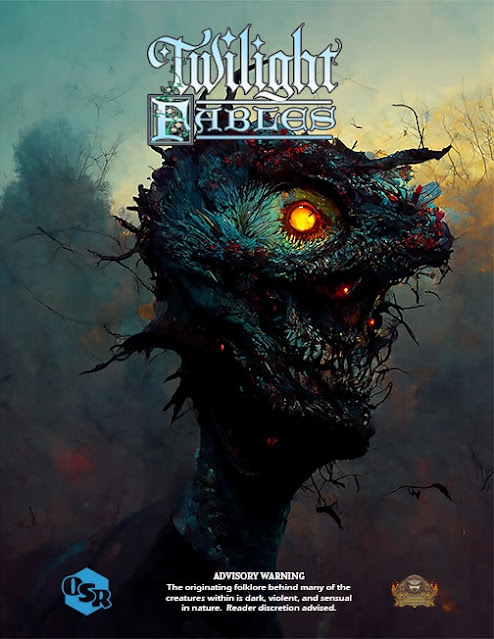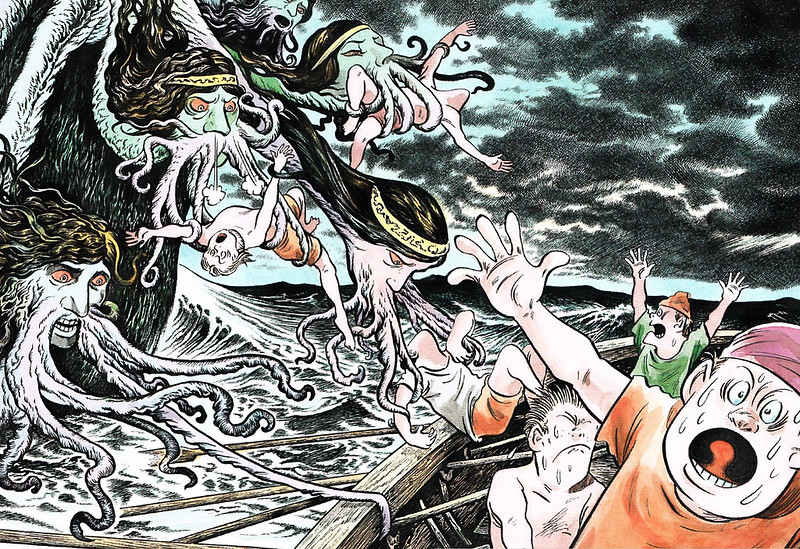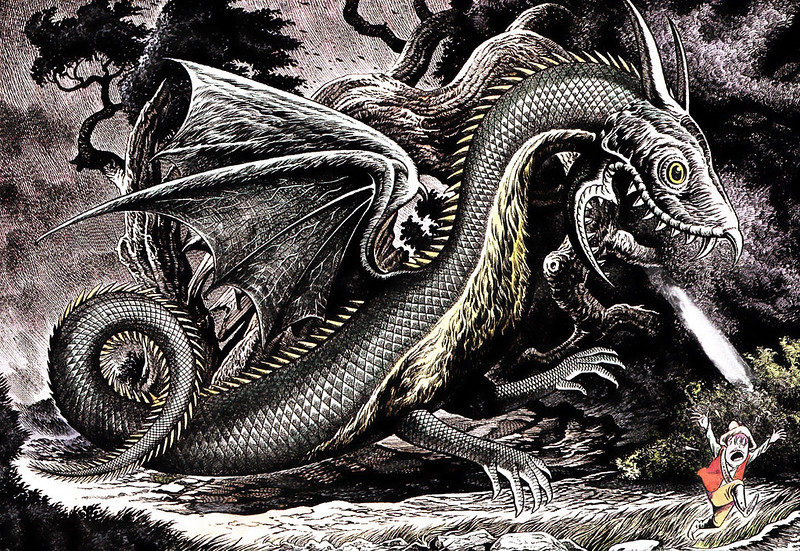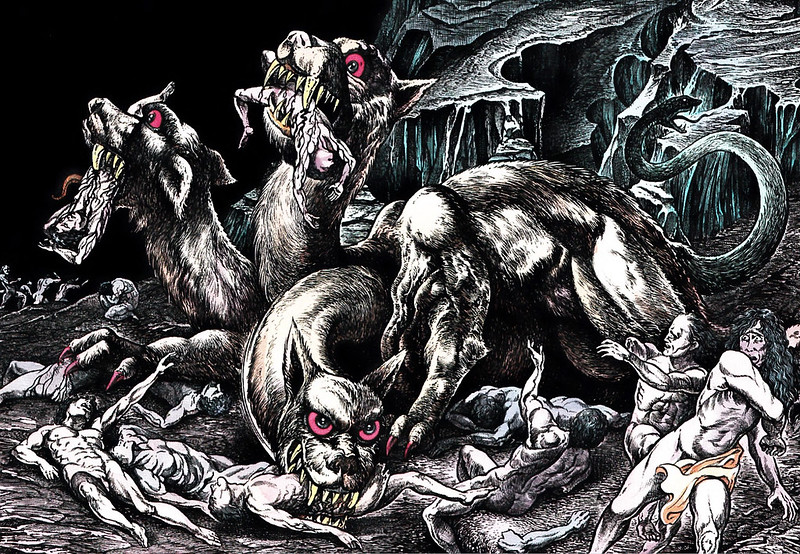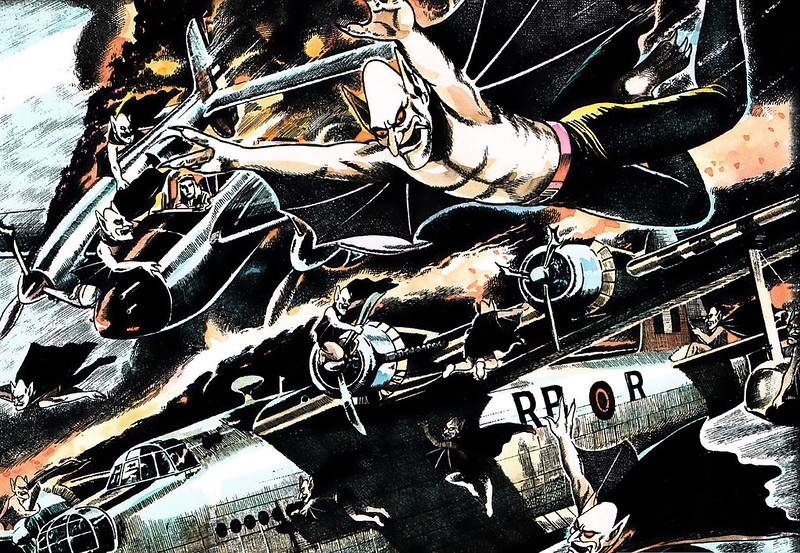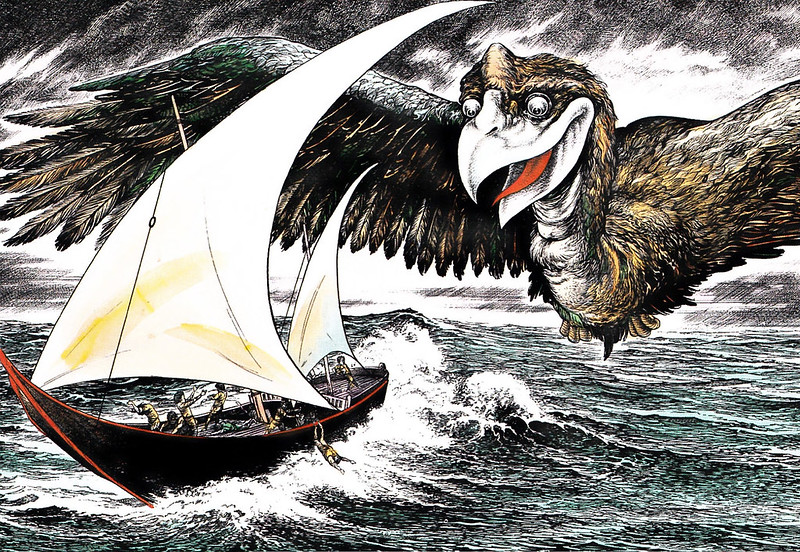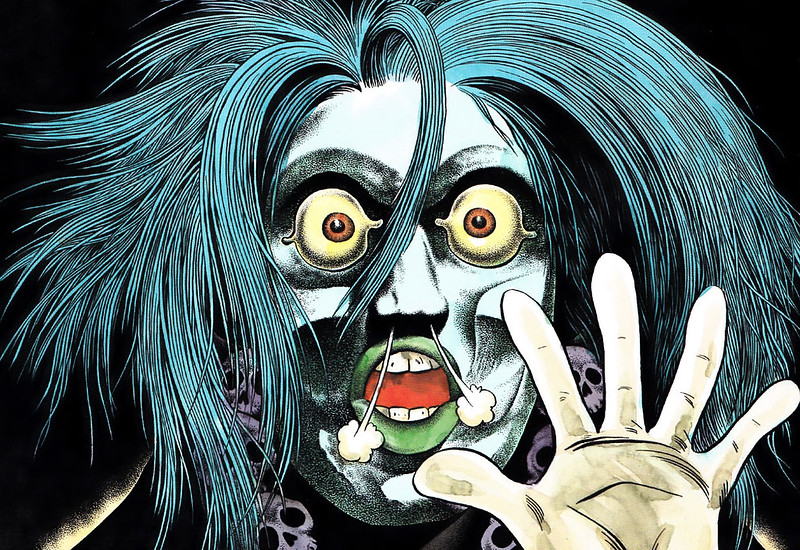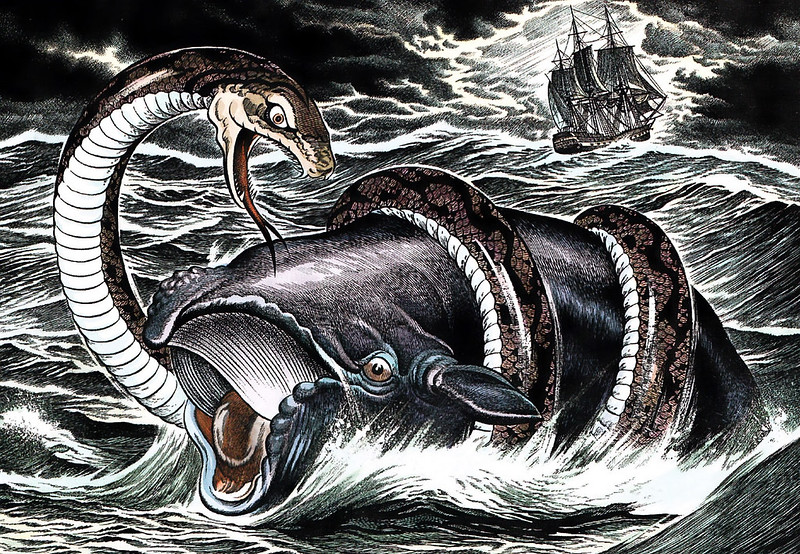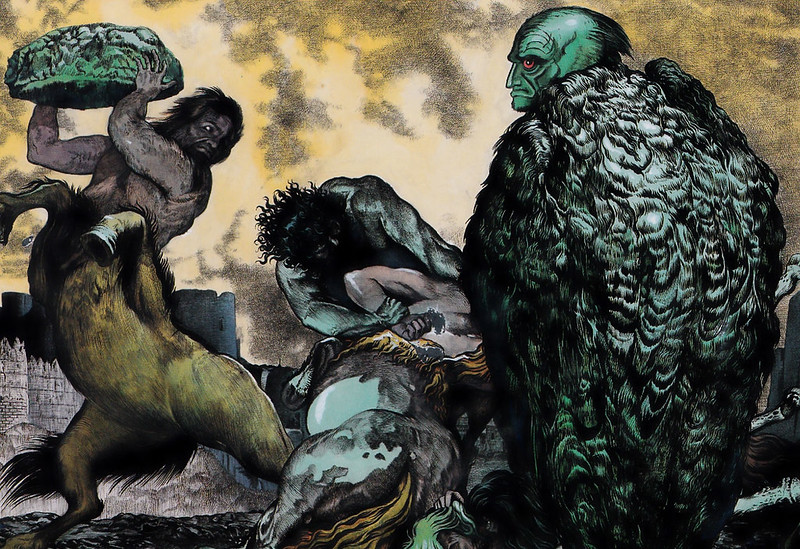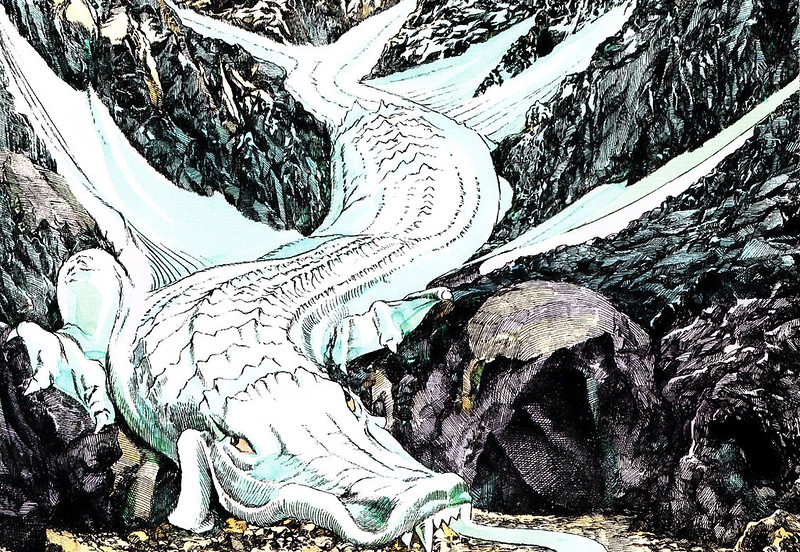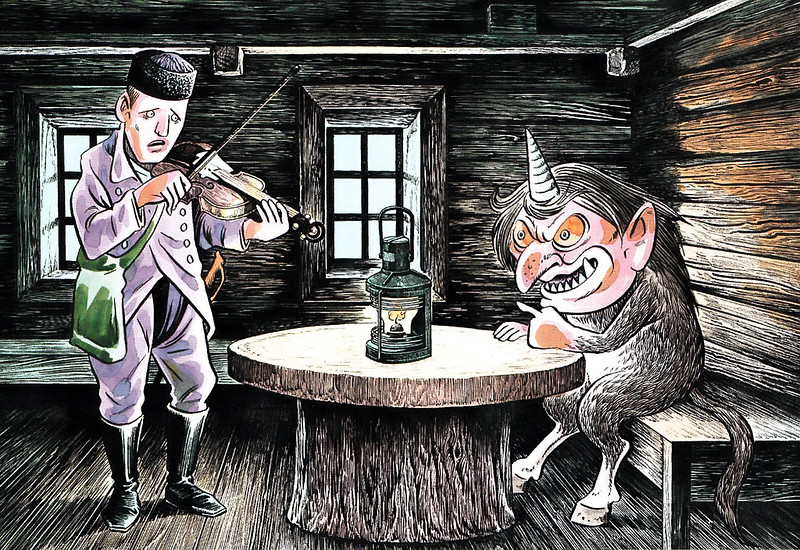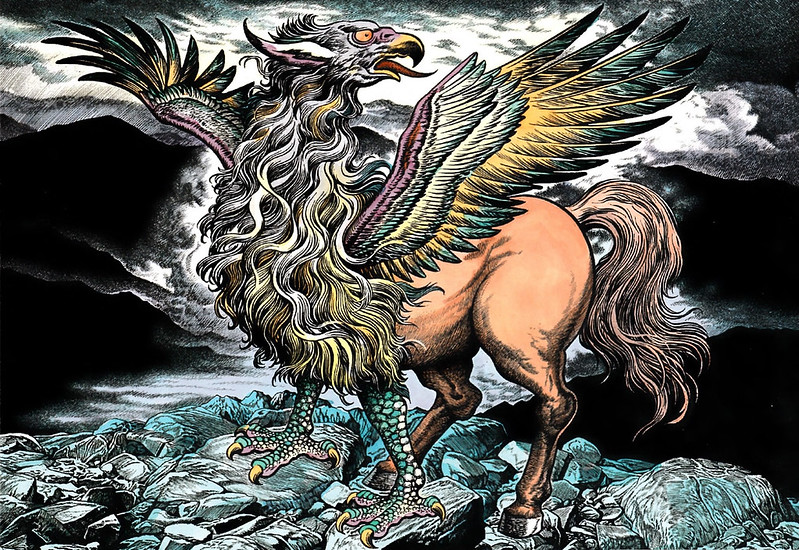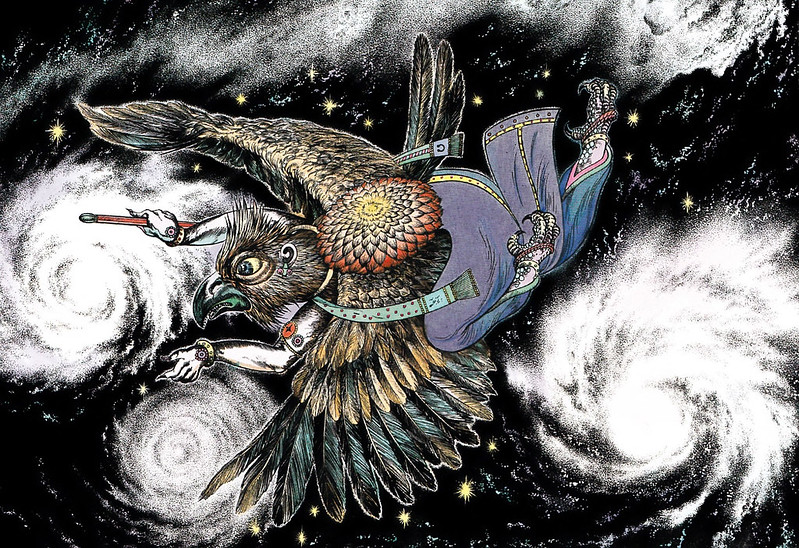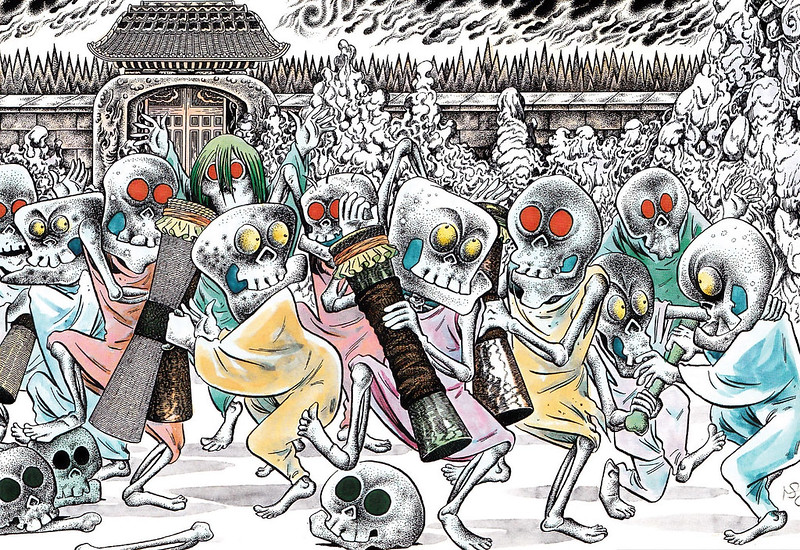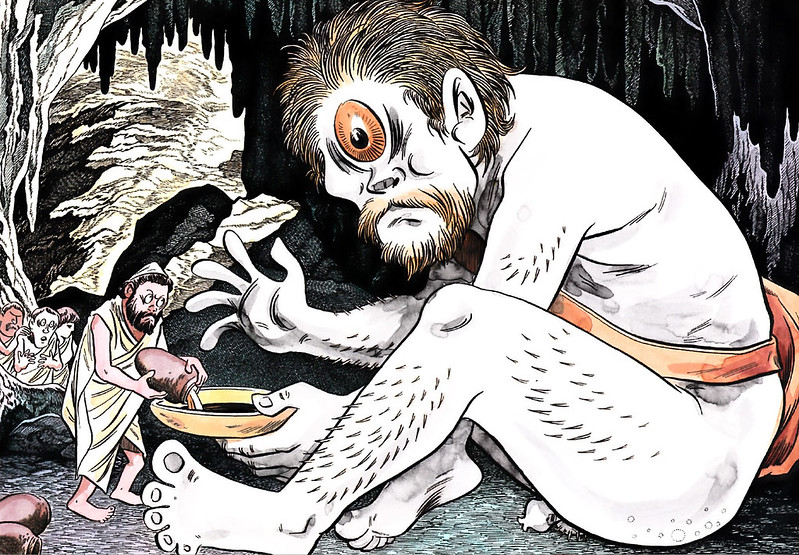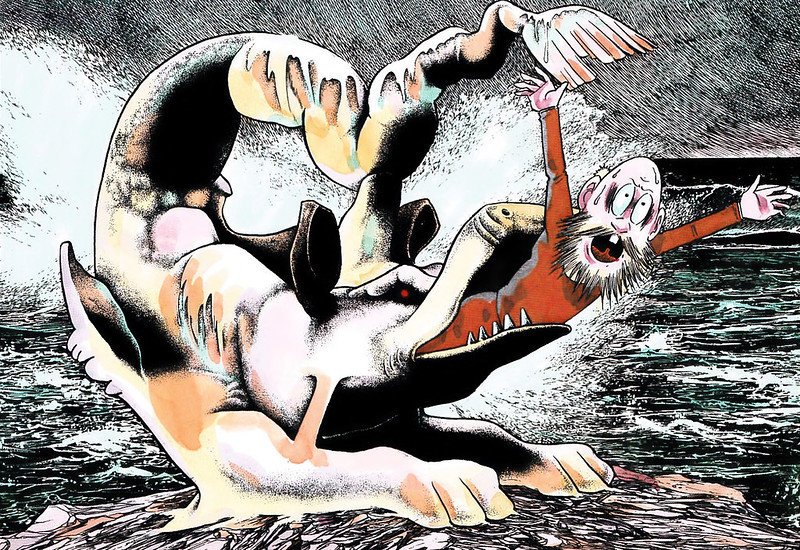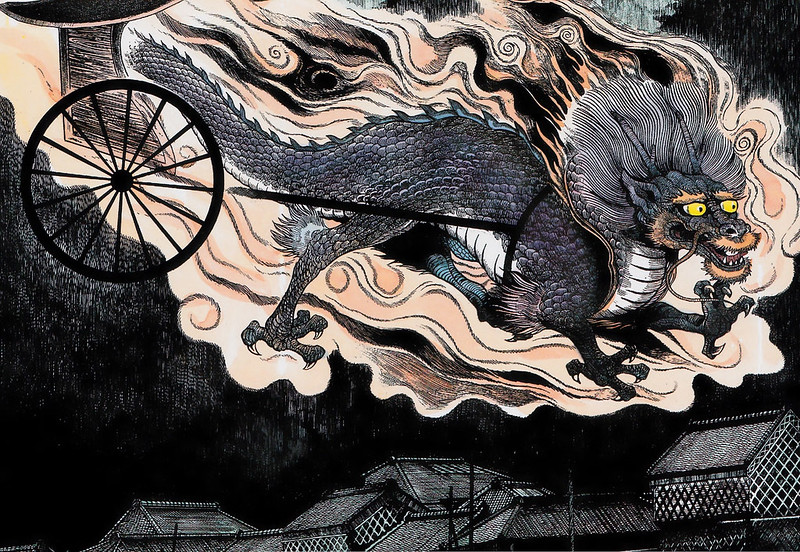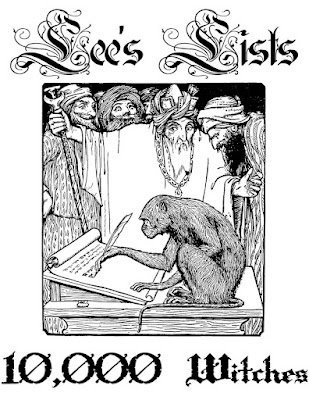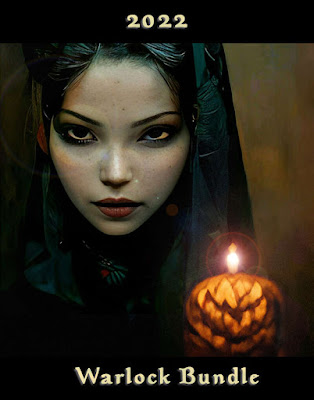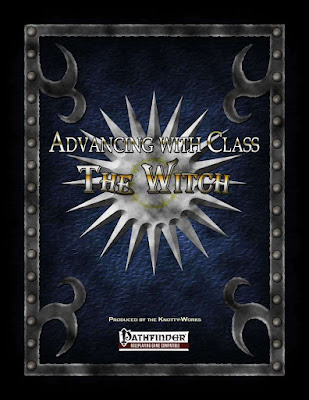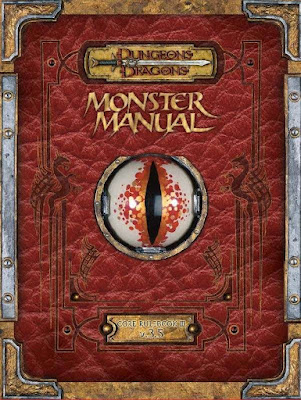
The Realm of Legendlore and of Azoth lies at an unstable nexus of reality, and where that instability touches other planes, including the Earth, Visitors can make the Crossing from one world to another. Sometimes intentionally, often unintentionally, perhaps because they inherited a keepsake which enables a Crossing, simply opened a door, or found a portal, perhaps a wardrobe or even a suitcase. Crossings have happened many times in the past—and not just by people. Both the Library of Alexandria and the Statue of Zeus at Olympia have both appeared in Azoth, Boudica and the Ninth Legion continued to fight each other for decades in Azoth, and even Amelia Earhart and Fred Noonan landed there in 1937, and even though they were never able to replicate powered flight, but gliders launched from hot air balloons are common in certain parts of Azoth. The scientific knowledge brought from Earth continues to influence the world of Azoth where magic is common, leading to synergistic devices such as an Ensorcelled Typewriter and Food Wave Machine (microwave). Previous Visitors have left other Strange Things behind, more recently electronic devices which quickly run out of power. Whilst Visitors bring knowledge, certain attitudes, and perhaps a Strange Thing or two with them—typically no more than what they have in their pockets or a bag, what they find after the Crossing is even more amazing.
Visitors find that the Realm is a world of magic, of elves and dwarves, goblins and troll, minotaurs and dragons. They find themselves changed, because however when Visitors make the Crossing, what they find on the other side is a stronger You, a greater reflection of each of their inner selves, an Other You. They find themselves capable of casting magic, working with alchemy, fighting with swords and bows, or handling guns. They find themselves changed into different Peoples—Bryzine Trolls, Dwarves, Elves, Hairfoots (Hairfeet?), Orcs, and Pixies, as well as Humans. They find themselves as Clerics, Rogues, Wizards, Rangers, Bards, Alchemists, Sorcerers, Gunslingers, and more. They may also find themselves unchanged, so if wearing glasses is part of their identity, then they wear glasses in the Realm. Visitors are also greater than themselves—they have a Legend attached to them, a Destiny that they are only partially aware of. Thus, they might be an Avatar of Peace or a Regent of Dragons. They will have great adventures in the Realm, but ultimately, they have a choice—to stay or return home.
This is the setting for
Legendlore, a roleplaying adaptation based on
The Realm, the comic book series first published by Arrow Comics and then Caliber Comics. In the comic book, four ordinary, modern-day teenagers are thrown into an alternate realm where magic is real, dragons roam the skies, orcs and hobgoblins terrorise travellers, where unicorns prance through the forest, and kingdoms wage war for dominance. Although a fantasy world, it differs from the atypical
Dungeons & Dragons world. Not just in the mix of magic and science, but in Legendlore the roleplaying setting, there is a sense of self-awareness. There are roleplayers on the Earth of
Legendlore and they can be Visitors too, so they make the Crossing fully aware of fantasy roleplaying such as
Dungeons & Dragons and all that entails. There is no equivalent of the
Legendlore Roleplaying Game though, so they are not totally forearmed with knowledge. Published by
Onyx Path Publishing, the adaptation is written for use with
Dungeons & Dragons, Fifth Edition. It includes new Backgrounds and Classes and sub-Classes, as well as rules for being Legends, sample beginning Player Characters, a starting adventure, and setting material for the Realm.
From the outset, it is clear that
Legendlore is designed to be as gender and identity inclusive as possible and that if a player wants to and is happy to do so at the table, that player can bring as much of themselves into the game as they want. What this means is their real self, their Earth-self can be exactly what they are in real life, but their Realm-self can be their best-self, their best You—or a reflection of it. Alternatively, each player can simply play a fantasy version of themselves, whether on Earth or the Realm, or on both. All of which should be discussed and agreed upon as necessary in Session Zero, which is discussed in the chapter on running the game.
Although it is possible to play Realmborn Player Characters in
Legendlore, which would perhaps be the closest that
Legendlore gets to a traditional
Dungeons & Dragons-style set-up, the emphasis is very much on playing Visitors. Their creation begins with selecting a Visitor Background, for example, Academic Education, Activist, Born into Wealth, High School Student, Writer, Working Poor, and of course, Roleplaying Aficionado. Several Realmborn Backgrounds are given too, which are all nation-based. The Realm Races—Bryzine Trolls, Dwarves, Elves, Hairfoots, Orcs, and Pixies—all provide certain traits and bonuses as you would expect, but these are cultural rather than innate. So a player has the flexibility to match and change as he wants. There are two new Classes in
Legendlore. One is the Alchemist, which blends chemistry and magic, crafting potions which have spell-like effects, whether thrown, imbibed, or applied. The other is the Gunslinger, which specialises in the use and maintenance of firearms, including the Culverin, an actual cannon! The other options are all sub-Classes of the standard Classes in the
Player’s Handbook. These include the Ocean Raider and the Woad Painted for the Barbarian, the Eye of Otharis for the Cleric, primarily sages and oracles, Paladins have Oath of Fealty, which they take to a nation, and Sorcerers are Sourceborn, who draw directly from the Pool of Magic for more powerful magic.
A Player Character, certainly a Visitor, also has a Legend. Each has a Reputation and a means of acquiring Legend Points. For example, the Avatar of Peace grants when a Player Character refuses to commit acts of violence, persuades others to lay down their weapons, and lead negotiations for peace. When acquired, they can either go into a communal pool or a player can keep them, but when expended they can either gain Advantage for a Player Character on an attack, saving throw, or ability check, or they can be used to add a new narrative element to play. The Legend system replaces that of the Inspiration from
Dungeons & Dragons, adding a little more flexibility. Just five are provided—Avatar of Peace, Bane of Ardonia (who oppose the isolationist and walled scientifically-advanced nation of Ardonia), Caln of Stone (uncompromising stability and construction), Regent of Dragons (dispensing wisdom and justice), and Suzerain of Blossoms (encouraging others to follow their own path and cultivating strengths and talents). Alternatively, a player can create his own for his character, but the advice for doing so does feel underwritten and the five given in
Legendlore are not really enough—certainly not if there are more than five players or the Realm is being visited a second time with new Player Characters.
All magic in the Realm draws from the Pool of Magic, but its casters—apart from Sorcerers who are Sourceborn—can suffer from ‘Menthruac’ or mind-lock if they attempt to cast too much magic, too quickly. When a Player Character casts an arcane spell, he can opt to gain a level of Menthruac, up to four levels. Each level provides several extra effects to choose from, such as ‘Careful Spell’ or Twinned Cantrip’, but comes with a downside such as Disadvantage on attack rolls or ability checks, all the way up to Hit Points being reduced to zero or even death! Menthruac is removed after a long rest, but gives a spellcaster the option to power up his magic should want to.
Legendlore also includes some seventy or so new spells, as well as twelve new rituals. Rather than draw fleetingly upon the Pool of Magic, like most arcane spells, rituals draw deeply from it and require a greater understanding of magic, period of study, and time to cast. For example, Open Crossing is a nine-hour ritual which opens a Crossing from the Realm to another destination. These should all take extensive game play to really learn and cast as they do have potentially very powerful effects.
Legendlore includes a decently comprehensive guide to the Realm and East Azoth, starting with its history from the arrival of the first humans and the wars that would result from their settlement, through to the peace following the end of the Forever War and then the Plague War that led to isolationism amongst many nations. The gazetteer is comprehensive too, detailing all of the nations of the region, even the Night Land, which even if it can be found, can only be entered during the hours of darkness. In addition, the gazetteer is littered with numerous adventure seeds. The bestiary, covering allies, adversaries, and creatures is likewise nicely detailed. Some of the races, such as the Dwarves and Goblins, adhere to their usual depictions, although others, notably the Orcs are different. Orcs have a porcine look and a poor reputation as raiders and pillagers, though that was long in the past when they found themselves being pushed out of their lands. These days they seek the return of their original homelands by diplomatic means and building trust. The bestiary also details demons, some of whom, such as Shinde Imas, the Elven Slayer, and Terrorek, the Plague Bringer, are the major villains of the Realms. Not included in Legendlore are writeups of any of the characters who made the Crossing in the comics—Alex, Dom, Majorie, or Sandra—and this is intentional. The starting point for
Legendlore in terms of time frame is the first issue of the comic, and it is up to the Game Master to decide whether or not they made the Crossing or not.
The advice for the Game Master on running
Legendlore is a mix of the general and the specific. There is good advice on handling Session Zero and on specific elements of the Realm as a setting. In particular, on handling good and evil since as a setting for
Dungeons & Dragons, Fifth Edition, there is no Alignment in the Realm, and also dealing with Player Character death. Resurrection is possible, but the resurrected often return changed in some way. The Game Master can make the process as simple or as complex as needed—but must be consistent. The other option is a new Player Character, but the Player Character need not be wholly new. It could be an earlier version of the player’s You before his lost character made the Crossing, or even a version from a slightly alternate Earth. The new version of the Player Character arrives bereft of knowledge of his predecessor’s adventures and could be of a wholly new Race or Class. There is advice too on getting home, and whether that is a Player Character objective, and also how much the campaign involves the Player Characters going back and forth between home and the Realm.
Rounding out
Legendlore is ‘Voices from Afar’, an introductory adventure in the Realm for four to six First Level Player Characters. After they make the Crossing, they find themselves caught in a plot to use a strange artefact to spread the borders of the dread Night Lands. Accompanying the scenario which should take two or three sessions to complete, is not one, but two sets of pre-generated Player Characters. These are the same, but First Level and Third Level respectively, the latter for a group which wants to try out a more powerful set of characters. At the end of the scenario, the Player Characters have the option to stay in the Realm or go home.
Physically,
Legendlore is well presented and laid out with a nice range of illustrations. What it does lack though is an index and that makes finding certain things challenging. A glossary would also have helped. The setting description is pleasingly balanced by some enjoyable pieces of colour fiction that follow the fortunes of several adventurers as they make the Crossing and discover the world of the Realm.
Legendlore is not a definitive guide to the Realm of Legendlore and of Azoth, and nor does it set out to be. It is a comprehensive and gameable guide, making the setting accessible and playable. If there is an issue with
Legendlore, it is that it does not include much in the way of advice on handling the transition from Earth to the Realm, and in particular, from the ‘ordinary’ You of the Player Characters of Earth to the ‘best’ or ‘inner’ You of the Realm. After all, that change is going to be more significant to some players than others. Some advice and suggestions as to long term play and campaign objectives would also have been useful. Other than that,
Legendlore is an engaging exploration of a familiar fantasy set-up, of ordinary folk transported to a fantastic world. Fans of The Realm who game will doubtless enjoy
Legendlore, but for players wanting an identity positive and inclusive fantasy setting for
Dungeons & Dragons, Fifth Edition, then
Legendlore not only supports that, but welcomes You to it.
 More Pathfinder material tonight.
More Pathfinder material tonight. 


